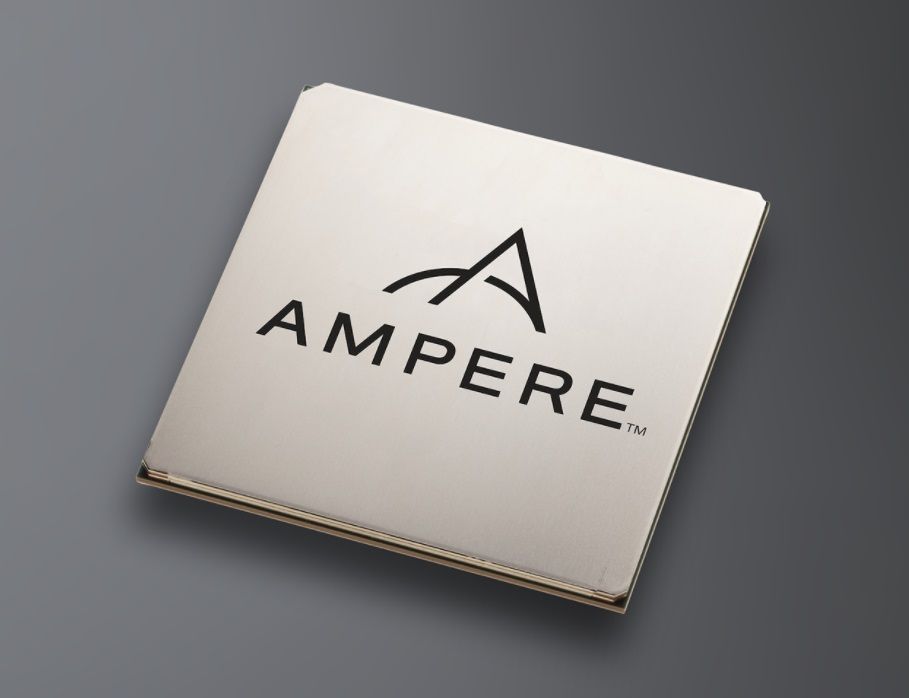Former Intel President Takes Aim At Intel’s Server Business With ARM-Based Chips

Former Intel president Renee James, backed by the Carlyle Group private equity firm, launched a new server chip company called Ampere that plans to use the ARM architecture to compete against Intel in the data center market.
X-Gene 3 Reborn?
X-Gene 3 was an ARM-based microarchitecture developed by AppliedMicro and officially launched in 2016. AppliedMicro was acquired by Macom, and Macom started sampling X-Gene 3 to customers in early 2017. Later last year, Macom ended up selling the X-Gene CPU business to a company owned by the Carlyle Group.
According to Linley Gwennap, principal analyst at the Linley Group, Ampere’s new server chip product is based on the X-Gene 3 microarchitecture. We asked Ampere if this was true, and the company confirmed that it purchased assets and IP from Macom. However, the company also mentioned that Ampere has a new team, which includes former employees of Intel, among which is Renee James, Intel’s former President. Ampere added that it has been adding to the Macom technology and plans to take the chip to production later this year.
Ampere Server Chip Specifications
Ampere promises that its chips will be able to offer higher density and bandwidth compared to currently deployed hardware with as good or better performance, as well as a significant reduction in power consumption and operating costs.
Some of the features of its ARM server processors will include:
- ARMV8 custom 64-bit CPU core operating at up to 3.3 Ghz
- Mixed signal I/O features including PCIE Gen 3, SATA Gen 3, USB and workload accelerators, as well as a high-performance on-chip fabric
- Enterprise class features including ECC (error-correcting code) and RAS (reliability, availability and serviceability)
- Full virtualization support
- Advanced power management
- Integrated security features
- ARM server base system architecture (SBSA) and server base boot requirements (SBBR) standards compliance
- Unified extensible firmware interface (UEFI) compliant BIOS
- Enterprise grade operating system support
Ampere has also built a development platform for companies that want to use its server chips. The Ampere development platform includes features such as:
- 19” chassis with an evaluation board featuring a built-in power supply, DRAM memory, storage disks and networking
- Boot and Power management firmware
- ARM Trusted Firmware (ATF)
- AMI AptioV UEFI BIOS with support for all the device peripherals, VGA and a configuration GUI
- CentOS Operating System
- GCC and LLVM tool chains
- AMI MEGARAC BMC firmware for baseboard management
- Built-in support for workload accelerators
- Documentation and collateral
Server Chip Competition Heating Up (In A Good Way)
Although Intel currently dominates virtually the whole server chip market, last year we saw a number of strong players go after Intel’s server business, including AMD with EPYC, Qualcomm with its 10nm Centriq 2400-series, and Cavium with ThunderX2.
These competitors may not necessarily beat Intel in single-core performance, but single-core performance is far less important in the server market, where a company could host thousands of cores. That’s where total cost of ownership, power efficiency, and performance per dollar become much more important purchasing factors.
These are factors that could be exploited by Intel’s competitors by offering more cores at similar or lower price points, more efficient cores, or other features that Intel may not be able to offer because it has to take a more mass-market approach compared to its nimbler competitors.
AppliedMicro’s X-Gene 3 has always looked like a promising competitor to Intel’s server chips. However, it never came to market because AppliedMicro wasn’t able to deliver on its promises on time, largely due to financial issues. Ampere is now backed by an experienced leader in the chip industry as well as a financially wealthy group, so it may have a better shot at succeeding where AppliedMicro failed.